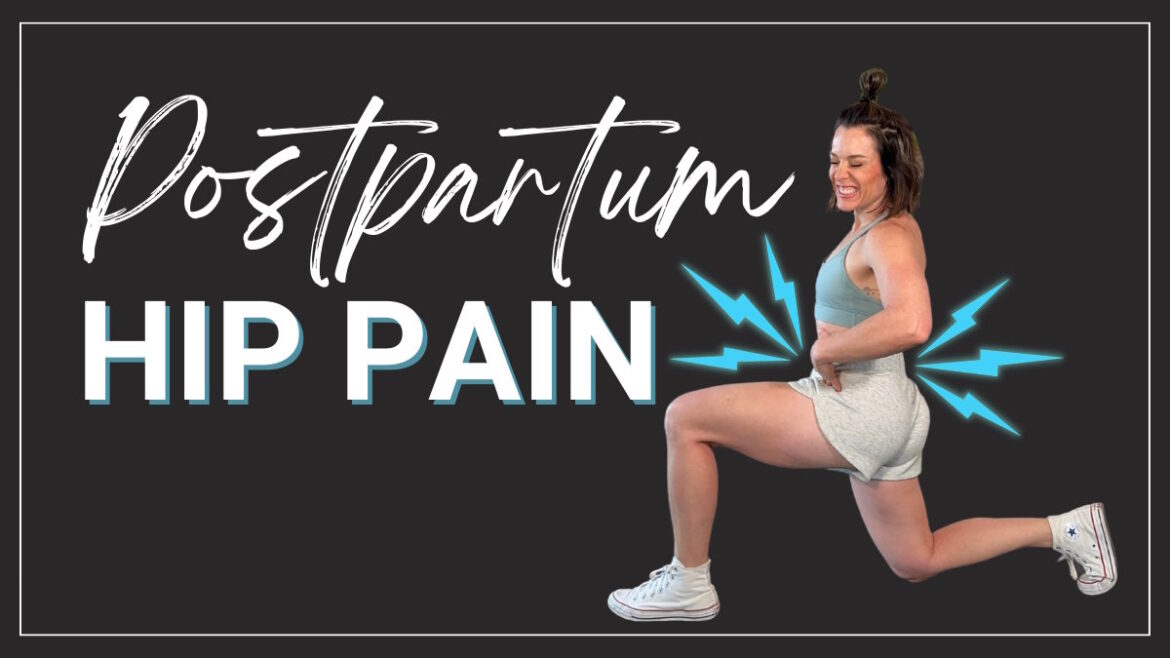Now that the baby is here, those aches and pains you felt during pregnancy will go away, right? Unfortunately, that’s not always the case. Let’s dig into a common one: postpartum hip pain.
Why Do I Have Postpartum Hip Pain?
Have you been dealing with hip pain since giving birth? If so, you’re not alone. Women can experience chronic hip pain for a few different – but common – reasons:
- Pregnancy can cause muscle imbalances. If a muscle or group of muscles is stronger on one side, it creates an imbalance. This can mean potential pain.
- Weak hip flexors may be to blame. During pregnancy, your hip muscles sort of “check out”. You tuck your butt to compensate, which tightens hip joints. (Cue muscle imbalances.)
- Radiating pain from the pelvic area is called pelvic girdle pain (PGP). Also called symphysis pubis dysfunction, the pelvic girdle is a ring of bones found at the base of the spine. Inflammation and pain in the pelvis/pelvic bones can affect other areas, including the hips, lower back, or thighs.
- Hormones (it always goes back to hormones!) might be at the root of your hip pain. During pregnancy, your body produces relaxin, a hormone that helps relax and loosen ligaments around the pelvis in preparation for birth. This hormone sticks around postpartum, especially if you are breastfeeding. It’s important to keep muscles in the hip area strong to help combat elasticity and potential injury.
- Sleep positions – try fixing your sleep posture. Ok, but how can you control how you sleep…when you’re asleep? More on this below.
How to Relieve Hip Pain Postpartum
Now that you know what’s causing your hips to hurt, let’s focus on getting rid of the pain. Initially, you might think of stretching to ease pain. While this might help, it won’t stop pain from coming back.
The real fix occurs when you take steps to strengthen your hips. Here are a few quick pointers on stretching versus strengthening:
Strengthen Your Hips and Surrounding Muscles
Work on rebuilding the muscles in your glutes, core, pelvic floor, and inner thighs. These muscle groups “turned off” during pregnancy to make room for the growing baby. Rebuilding them postpartum means less pain (in the hips or elsewhere).
Start with foundational healing work. Learn how reconnecting with your breath can help your core and pelvic floor. It is also important to understand how to properly engage your core.
Add in exercises that support hip strength, focusing on the following muscle groups:
- Glutes: See how to fix your butt after pregnancy.
- Core: Focus on proper core engagement, completing exercises like heel slides, side planks, dead bugs, and bridges to improve core stability.
- Pelvic floor: In addition to breathing, learn to strengthen and relax your pelvic floor muscles (no, this doesn’t mean Kegels!)
- Inner thigh: Strengthening your inner thighs, in tandem with your glutes, keep you balanced and support instability.
Manage Pelvic Girdle Pain
While pelvic girdle pain or SPD, differs from hip pain, it can still make day-to-day life hard. The goal is to restore hip stability and combat elasticity caused by the stretching and hormonal shifts of pregnancy.
If you have pain in the pelvic region, think “like a mermaid.” Keep your knees and thighs together as you get in and out of bed, the car, etc.
Focus on regular, low-impact exercises. Avoid high-impact exercises like running or tennis. If pain worsens with activity, stop, and rest. Over the long term, SPD typically heals on its own.
There’s no shame in wearing a support as you heal and regain strength and muscle balance. Pelvic support belts (NOT waist trainers!) have been shown to help as your body heals.
Sleep with Good Posture
Adjusting your pillows to better support your joints will lead to a good night’s rest. It will also minimize pain you feel during the day.
- If you sleep on your side, add a knee pillow to better align your hips and spine.
- Stomach sleepers avoid using a pillow under your head. Instead, put it under your hips to prop them up.
- Back sleepers should place a pillow or bolster under their knees to ease pressure on the hips and low back.
As always, please see a doctor or a pelvic floor physical therapist if you’re in constant or severe pain. A physical therapy plan tailored to your needs may be necessary.
Take the Next Step
If you’re ready to heal your core and pelvic floor, and ease issues like postpartum hip pain, check out the Strong Like A Mother program. All of this, and so much more, is covered in SLAM’s total body workouts.
